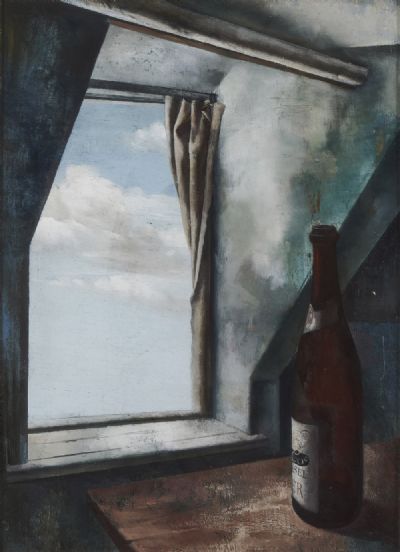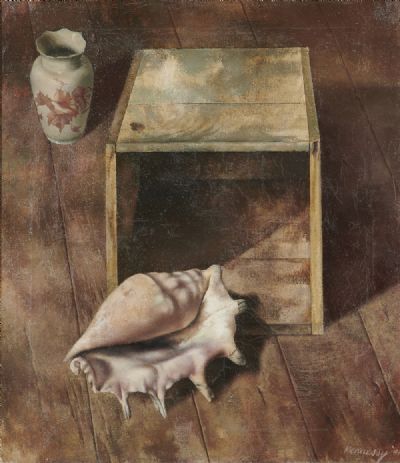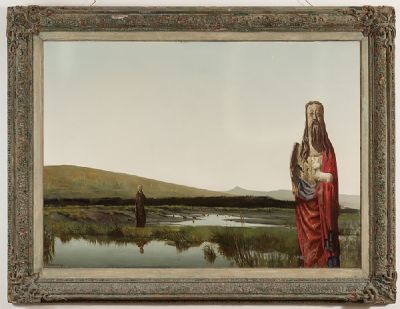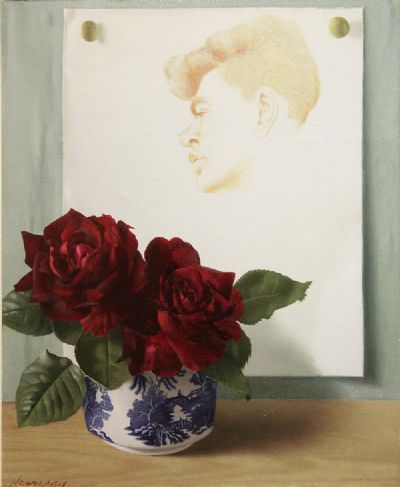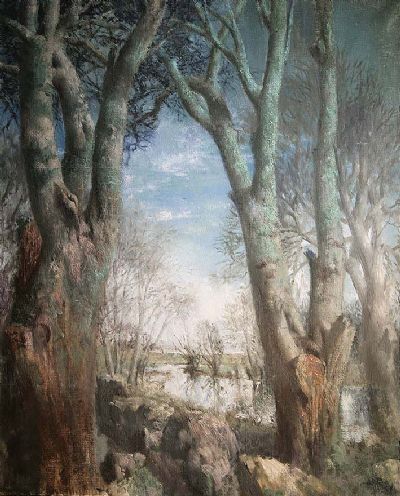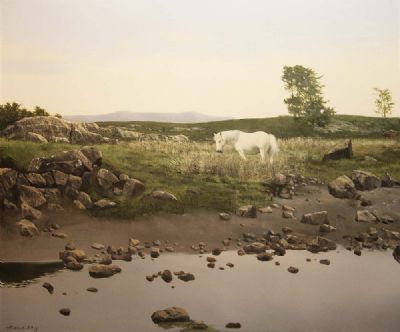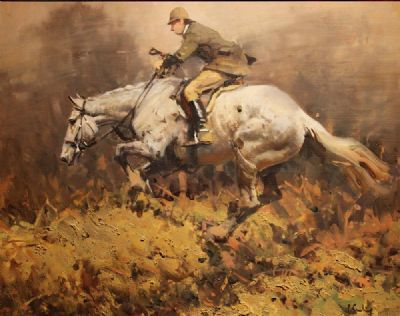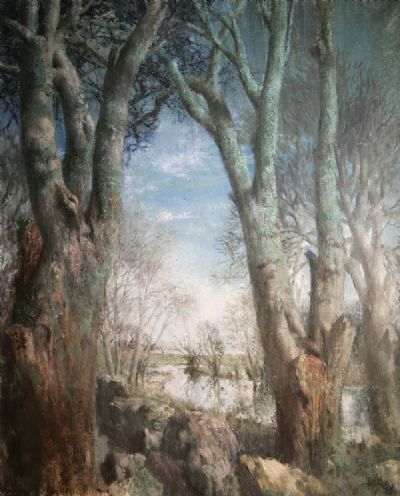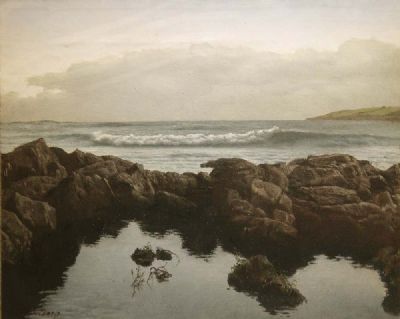Patrick Hennessy
Patrick Hennessy was born in Cork and studied in Scotland, Paris and Rome. His studies led him to admire the work of McIntosh Patrick, Piero della Francesca and Vermeer. Along with his visual art practice, Hennessy had a deep love of music and dance.
He returned to Ireland in 1939 and immediately became embroiled in the artistic movement in Dublin through the enabling force of Mainie Jellett. Critics found Hennessy intensely personal style difficult to critique. An academic draughtsman, his process was technical and meticulously finished. He was named surrealist, romantic, impressionist but his work did not conform fully to any of these styles, defying pre-existing genres, and his subject can most easily be described as the painting of mood. His output was prolific and his work embodied a bridge between modernism and the past through his varied range of techniques. Though the 1940s were dominated by his success in the area of portraiture, he also worked in landscape and still lifes. His paintings were thoroughly inventive and unlike anything else being created in Ireland at the time.
His work was embraced by the two antithetical artistic movements at the time, the Royal Hibernian Academy and its counterpart, the Society of Dublin Painters. He was an elected member of RHA aged only 34, and elected president of the Dublin Painters four times in 1834-37. An example of his work was selected to tour North America as part of an exhibition of Contemporary Irish painting which secured his future success in USA and the Guildhall Gallery in Chicago. A selection of his work was also exhibited at ROSC71. His work is in a number of collections including Crawford Municipal Art Gallery, Cork; Hugh Lane Municipal Gallery, Dublin; Limerick City Gallery of Art, Limerick; National Gallery of Ireland, Dublin and Waterford Municipal Art Collection, Garter Lane Arts Centre. Read More
He returned to Ireland in 1939 and immediately became embroiled in the artistic movement in Dublin through the enabling force of Mainie Jellett. Critics found Hennessy intensely personal style difficult to critique. An academic draughtsman, his process was technical and meticulously finished. He was named surrealist, romantic, impressionist but his work did not conform fully to any of these styles, defying pre-existing genres, and his subject can most easily be described as the painting of mood. His output was prolific and his work embodied a bridge between modernism and the past through his varied range of techniques. Though the 1940s were dominated by his success in the area of portraiture, he also worked in landscape and still lifes. His paintings were thoroughly inventive and unlike anything else being created in Ireland at the time.
His work was embraced by the two antithetical artistic movements at the time, the Royal Hibernian Academy and its counterpart, the Society of Dublin Painters. He was an elected member of RHA aged only 34, and elected president of the Dublin Painters four times in 1834-37. An example of his work was selected to tour North America as part of an exhibition of Contemporary Irish painting which secured his future success in USA and the Guildhall Gallery in Chicago. A selection of his work was also exhibited at ROSC71. His work is in a number of collections including Crawford Municipal Art Gallery, Cork; Hugh Lane Municipal Gallery, Dublin; Limerick City Gallery of Art, Limerick; National Gallery of Ireland, Dublin and Waterford Municipal Art Collection, Garter Lane Arts Centre. Read More

